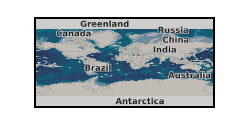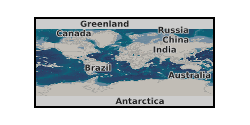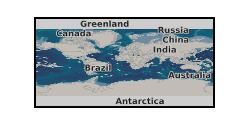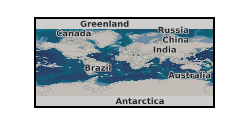University of Liverpool
Type of resources
Topics
Keywords
Contact for the resource
Provided by
Years
Formats
Representation types
Update frequencies
Scale
Resolution
-
This dataset contains information about hourly temperature variation, phenotypic and genetic change, and change in environmental parameters in a two-year mesocosm study designed to tease apart the impact that phenotypic plasticity and genetic diversity have on rate of adaptation to experimental heatwaves. All data were collected between 2017 and 2019. Thermal data was collected continuously using data loggers. The frequency of natural heatwaves was manipulated using a programmable aquatic mesocosm facility using data collected from real heatwaves from 2006. Phenotypic evolution was tracked using intermittent common garden life-history studies while changes in clone frequency were determined using microsatellite markers to track changes in clone frequency in manipulated populations over two years. Experimental data on zooplankton community dynamics were monitored using intermittent depth integrated sampling of communities in each mesocosm over two years. The work was supported by the Natural Environment Research Council (Grant NE/N016017/1). Full details about this dataset can be found at https://doi.org/10.5285/2ae5e8d3-be36-4517-b80c-c6b91792b769
-

P* data obtained through hydrostatic loading experiments, using triaxial experimental apparatus, as well as yield curve data obtained through differential loading tests, prior to the discovery of P* for different synthetic sandstones. The methodology used was taken from Bedford et al. (2018, 2019). Grain size analysis data obtained using a Beckman Coulter LS 13 320 laser diffraction particle size analyser. Particle analysis was conducted on five different synthetic sandstones with different grain size distributions. Secondary electron and backscatter electron SEM images for natural and synthetic sandstones. Secondary electron images were stitched together to form a whole core image. They were then binarised following the methodology of Rabbani and Ayatollahi. (2015). Hexagon grid size data used to obtain the correct grid size for performing porosity analysis across an mage using Fiji software (Brown, 2000). Bedford, J. D., Faulkner, D. R., Leclère, H., & Wheeler, J. (2018). High-Resolution Mapping of Yield Curve Shape and Evolution for Porous Rock: The Effect of Inelastic Compaction on 476 Porous Bassanite. Journal of Geophysical Research: Solid Earth, 123(2), 1217–1234. Bedford, J. D., Faulkner, D. R., Wheeler, J., & Leclère, H. (2019). High-resolution mapping of yield curve shape and evolution for high porosity sandstone. Journal of Geophysical Research: Solid Earth. Brown, G. O., Hsieh, H. T., & Lucero, D. A. (2000). Evaluation of laboratory dolomite core sample size using representative elementary volume concepts. Water Resources Research, 36(5), 484 1199–1207. Rabbani, A., & Ayatollahi, S. (2015). Comparing three image processing algorithms to estimate the grain-size distribution of porous rocks from binary 2D images and sensitivity analysis of the grain overlapping degree. Special Topics & Reviews in Porous Media: An International Journal, 6(1).
-

All the raw experimental data obtained for the study reported in Hodgson, E., Grappone, J. M., Biggin, A. J., Hill, M. J., & Dekkers, M. J. (2018). Thermoremanent behavior in synthetic samples containing natural oxyexsolved titanomagnetite. Geochemistry, Geophysics, Geosystems, 19. https://doi.org/10.1029/2017GC007354
-

A new family of spherical harmonic geomagnetic field models spanning the past 9000 yr based on magnetic field directions and intensity stored in archaeological artefacts, igneous rocks and sediment records. The pfm9k geomagnetic field models and datafiles as well as the individual bootstraps of the pfm9k.1b geomagnetic field model presented in A. Nilsson, R. Holme, M. Korte, N. Suttie and M. Hill (2014): Reconstructing Holocene geomagnetic field variation: new methods, models and implications. Geophys. J. Int., doi: 10.1093/gji/ggu120 are included here.
-
This dataset contains information about the multivariate plastic life-history responses and thermal tolerance capability of 56 Daphnia magna clones exposed to 4 different environments. The experiment was conducted in a laboratory at the University of Liverpool in 2017. The work was part of a larger mesocosm study that aimed to tease apart how plasticity and genetic diversity influence the evolutionary potential of natural populations. Life history data were measured in common garden experiments. For each clone of the same genotype across all environments, we measured: length at maturity; length at second clutch; age at maturity; age at second clutch; juvenile growth rate ((length at maturity - length as neonate) / age at maturity); adult growth rate ((length at second clutch - length at maturity) / (age at second clutch-age at maturity)); average fecundity (across clutches 1 and 2); and average offspring size (across clutches 1 and 2) The work was supported by the Natural Environment Research Council (Grant NE/K007394/1). Full details about this nonGeographicDataset can be found at https://doi.org/10.5285/cce747ad-7536-4669-a244-d8bc48693cc7
-
This dataset measures colour and estimates body size of ant species collected across four vertical strata: subterranean, ground, understory and canopy in lowland tropical rainforest. Ants were collected using different trapping techniques in each stratum; baited traps were used in the subterranean, understory and canopy strata and Winkler extractions were used to collect ground ants. The colour of each ant species was classified categorically by eye using a set pre-determined colours. A single dominant colour was assigned for each species, this was determined as the modal colour across all body parts and individuals for each species. Each colour was linked to a set of RGB (red, green and blue) values which were extracted from the original colour wheel using the image editing software paint.NET (v.4.0.3); RGB values for each colour were converted into HSV (hue, saturation and value) format. Body size of each species was estimated by measuring Weber's length. Accompanying the ant species data set are four additional data files: 1) data set measuring intraspecific variation in colour, 2) data set measuring intraspecific variation in Weber's length, 3) data set measuring soil temperature, and 4) data set measuring UVB radiation at 5 m vertical intervals from the ground to the canopy. This data is a contribution from the UK NERC-funded Biodiversity And Land-use Impacts on Tropical Ecosystem Function (BALI) consortium. Full details about this dataset can be found at https://doi.org/10.5285/c0f65bf5-3cb0-41ab-be3d-982490cecba9
-

This dataset contains raw data from synthetic and experimental velocity steps analyzed using the MATLAB routine ‘steadystate.m’, as presented by Giacomel, P., Faulkner, D.R., Lambert, V., Allen, M.J (2024): ‘steadystate: A MATLAB-based routine for determining steady-state friction conditions in the framework of rate- and state- friction analysis’ – GSA, Geosphere. The data is provided in .zip folder containing the Velocity Steps and the outputs from steadystate.m, along with the scripts used to generate the figures shown in the Manuscript and Supplementary Material. The folder ‘Velocity_Steps’ notably contains the complete suite of mechanical data (subfolder ‘Mechanical_Data), the modelled rate- and state- friction parameters (subfolder ‘Modelled_RSF_Parameters SlipLaw’) obtained by assuming steady state at different displacements, as well as the linear detrended end members (i.e., at short to large displacements) fitted via inverse modelling (subfolder ‘Detrended_Velocity_Steps + Fit-Inversions’). Such observations were foundational for the development of the steadystate.m routine. Each subfolder is accompanied by a README.txt file that reports on the link between the raw .txt data with the MATLAB scripts generating the associated figures. For the sepiolite fault gouge used during the friction velocity steps, please refer to: Sánchez-Roa, C., Jiménez-Millán, J., Abad, I., Faulkner, D. R., Nieto, F., and García-Tortosa, F. J., 2016, Fibrous clay mineral authigenesis induced by fluid-rock interaction in the Galera fault zone (Betic Cordillera, SE Spain) and its influence on fault gouge frictional properties: Applied Clay Science, v. 134, p. 275-288.
-
This dataset measures the abundance of ant species at baited traps set across twelve trees in four experimental plots in lowland, tropical rainforest. Baited traps were set at 5 m vertical intervals from the ground to as high as possible in the canopy, the stratum of each trap location was recorded. At each height two pairs of baited traps were set, each pair contained one trap baited with carbohydrate (honey and oats) and the second with protein (tuna). Traps within each pair were separated by approximately 20cm were left open for 24 hours. All ants collected were identified to morphospecies level and the species abundance in each trap was recorded. Full details about this dataset can be found at https://doi.org/10.5285/62bf0251-ca8d-4288-a274-0ff6e39b3a3c
-
This dataset contains information about various aspects of the alarm communication network of African savannah herbivores. Data were collected in April 2015 and between September 2015 and October 2016 in the Masai Mara National Reserve, in southern Kenya (1°30’S, 35°10’E). Research focused on the 12 most common herbivore species in the ecosystem. For each of these species, the dataset provides information on vigilance rates, the probability to alarm call in response to different predators, the responsiveness to heterospecific alarm calls, as well as the relative abundance and grouping behaviour of species. Details on study species, study design and data analysis are provided in the supporting documentation. Full details about this dataset can be found at https://doi.org/10.5285/cc0794f0-748a-42aa-b491-2f9b65c771a6
-
The dataset provides measurement of timing of germination and seed mass in the F1 progeny, the P1 paternal contribution to F1 offspring (paternal reproductive success), and assesses the effects of flowering time on the mating system for Festuca ovina (F. ovina) after seventeen years of in-situ experimental drought treatment. The study was conducted at the Buxton Climate Change Impacts Laboratory (BCCIL) and began in July 2010. Full details about this dataset can be found at https://doi.org/10.5285/65c14df6-b762-441c-8d8d-9112f7350f03
 NERC Data Catalogue Service
NERC Data Catalogue Service